
HVAC Test - Journeyman practice exam test 2 of 4 Assessment
HVAC Test - Journeyman practice exam test 2 of 4 :
Online HVAC test and journeyman practice exam 2 of 4. 20 questions in this practice exam. Plus, advice on How to test HVAC capacitors in the details area.
Please consider our training while here ...
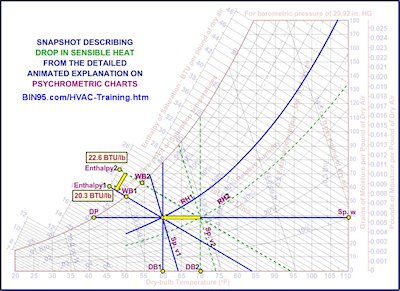
Study up with our Commercial & Industrial Refrigeration Training Course. A great start for HVAC Technicians.
HVAC Test - Journeyman practice exam test 2 of 4 test details:
( 20 Questions )
Online HVAC practice test with questions and answers. 2 of 4 HVAC tests, with 87 questions total. 20 questions in this test.
If you found this test via a search, please see the advice below about How to test HVAC capacitors. This extra information may help get your thoughts on the job before taking the test above—just some basics.
How to test HVAC capacitors
To test HVAC capacitors, you can follow these steps:
Step 1: Safety first
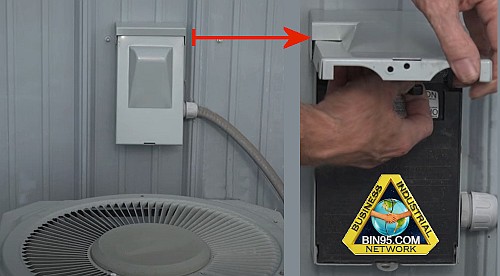
Safety First: Pull HVAC disconnect, power down!
Before starting, turn off the power to the HVAC system at the main circuit breaker to avoid accidents.
Step 2: Discharge the capacitor [Cap]:
The best method is to use your meter or a resistor. Short across the capacitor terminals to discharge any remaining voltage.
Side Note:
How to identify AC capacitor terminals?
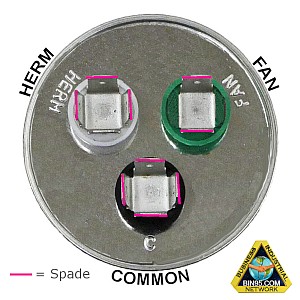
Run capacitor labels or color coding is the best method to identify terminals.
- If not rusted, the lettering stamped on the Cap is best for identifying terminals.
- "C" = Common
- "HERM" = Compressor
- "FAN" = Fan
- If the Cap manufacturer used colored insulators:
- Black = Common
- White = Compressor
- Green = Fan
- By the number of spades on each connection on some Caps.
- 4 spades = Common
- 3 spades = Compressor
- 1 or 2 spades = Fan
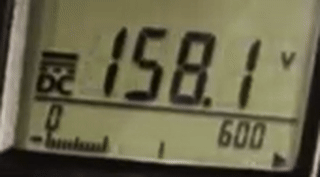
Use your multimeter on volts and "read" the voltage across the two terminals. The meter will safely bleed off the stored power, and you will see the voltage drop [drain]. But it is slow, about 1 minute for each capacitor in an HVAC dual capacitor. It takes two minutes. But, it's the safest way to drain a capacitor for both the technician and the capacitor's life.
Using a screwdriver seldom causes arching. But, it can damage plates and shorten the capacitor's 20-year life. Slowly drain the capacitor with a 20kΩ-5w resistor or a meter for safety. The resistor method is quicker than the meter method and the most common.
Step 3: Use a multimeter:
Use a multimeter. Set it to the highest resistance range and discharge the capacitor again. Then, place the multimeter leads on the capacitor terminals. Zero marks the starting point for resistance, which climbs upward to infinity. If the resistance remains at zero, the capacitor is shorted. If the capacitor is open, the resistance remains infinite (O.L.).
Step 4: Check the capacitance:
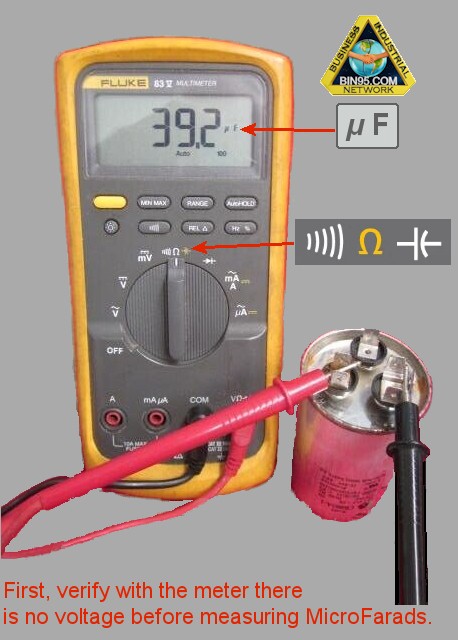
Safety First: First, drain the capacitor. Then, check with a VOM before testing microfarads!
Check the capacitance. First, use your meter to verify that there is no voltage. Then, measure in MicroFarads. Set your multimeter to the capacitance setting. Then, connect the leads to the capacitor terminals. Compare the reading on the multimeter to the rated capacitance on the capacitor. The capacitor is faulty if the reading is much lower or higher than its rated capacitance.
Testing Capacitors FAQ:
Here are the three most frequently asked questions about testing capacitors.
Can I test a capacitor without a multimeter?
A multimeter is the best way to test a capacitor. No meter in hand? At least give it a visual inspection for signs of bulging or leakage. Those are signs of a faulty capacitor.
What happens if a capacitor is not working properly?
A faulty capacitor can harm the HVAC system. It reduces efficiency and may damage the motor or compressor.
What happens if a capacitor is not working properly?
It's good to test HVAC capacitors during regular maintenance. It's best to do this once a year.
Navigate below to one of the other three HVAC Test.
HVAC Test - Journeyman Practice Exam Test 1 of 4
HVAC Test - Journeyman Practice Exam Test 2 of 4 << The page you are on now.
HVAC Test - Journeyman Practice Exam Test 3 of 4
HVAC Test - Journeyman Practice Exam Test 4 of 4
Published:
